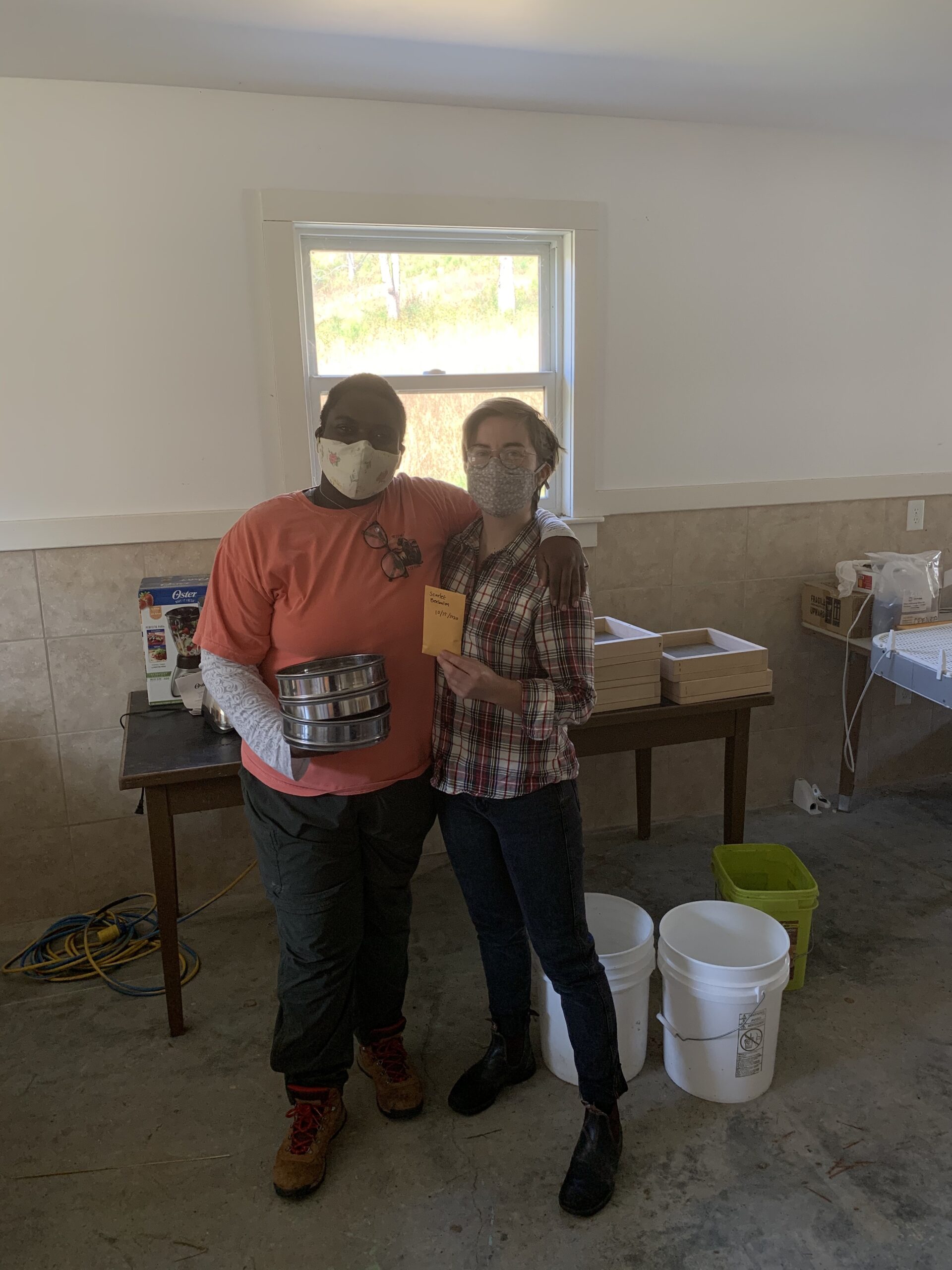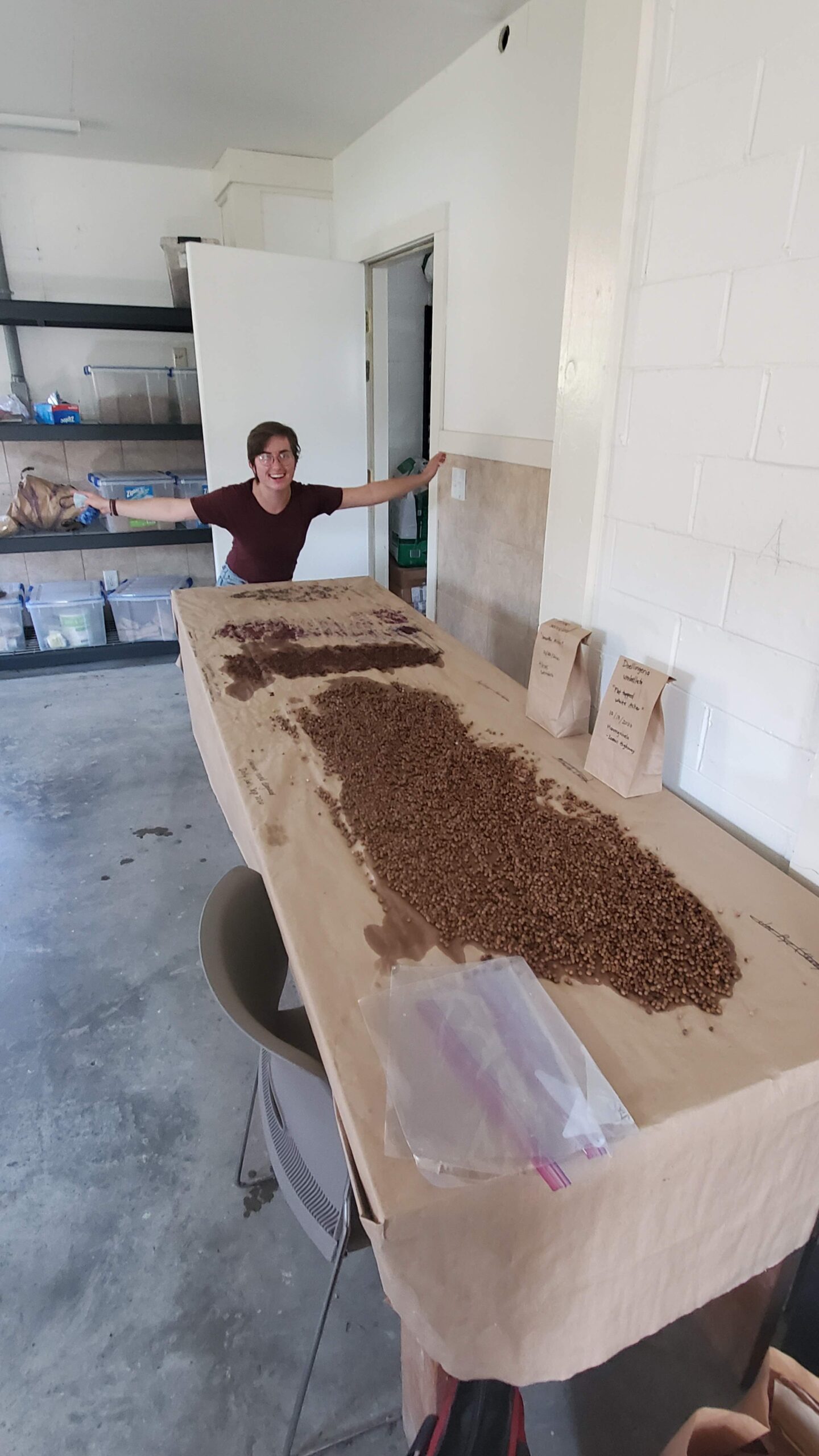
It finally snowed here in Marlinton, and all of the plant species on our list have officially gone to seed. We spent the past month driving north to collect from the tundra-esque Dolly Sods Wilderness and Spruce Knob, the highest points in the state. As we neared the end of October, our seed collection days shifted quickly from sunburnt, humid adventures to snowy and frigid races to the finish line. Last week at Dolly Sods, we alternated between collecting berries in sleet and jumping into the truck to blast heat on our wet-gloved hands. Collecting seed in cold weather at these higher elevations is an exhilarating experience and reminds me of late July in northern Alaska. The wind smells the same – of encroaching frost and decomposing leaves. There is overlap in foliage as well – caribou moss, stunted, leaning spruce trees and lots of lichen on bare rock. It’s quite amazing how the ecotone at high elevation bogs in West Virginia can bear resemblance to latitudes as far north as the tree line on the edge of the Arctic Circle.

Between collection days, we clean our latest seedstock. It has been an honor to work with Morgan of Appalachian Headwaters, who has been teaching us proper technique for cleaning and storing specific seed types. We have been lucky enough to have access to the cleaning tools and facilities at Appalachian Headwaters, and we are ordering some more equipment for making the same use of our own miniature processing plant here in Marlinton.
I was surprised to find that seed cleaning is mostly intuitive and simply demands everyday resourcefulness. How do you remove cranberry seeds from all that berry pulp? Put electrical tape on the blades of an ordinary blender and chop it up, then filter it out through multiple sieves. How do you remove the outer layer of film from alternate-leafed dogwood? Rub it furiously on a screen and then pick it off with your nails. The whole process of cleaning is unexpectedly familiar, like working soil in a garden. With all that repeated movement, it’s easy to get in the zone and process your thoughts alongside the seeds as you pick seeds apart and wash away the pulp.

Heaps of seeds!
By the end of November, we will have finished up seed collection and will continue to process the seeds we’ve collected. Until next time!


